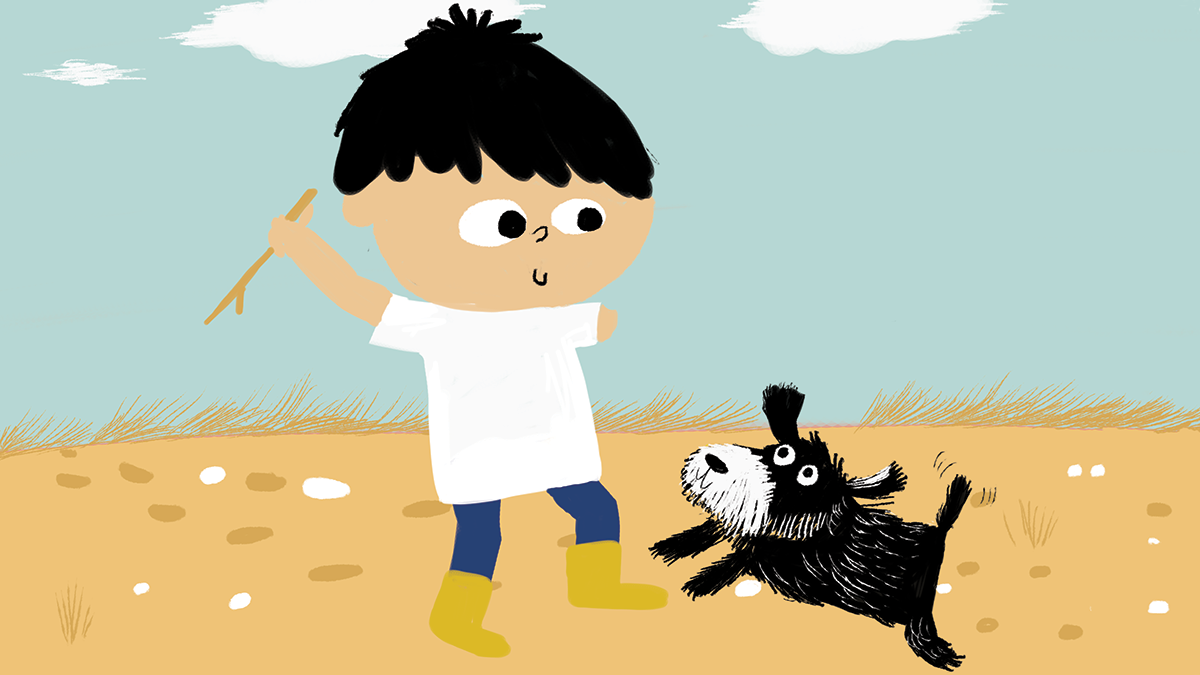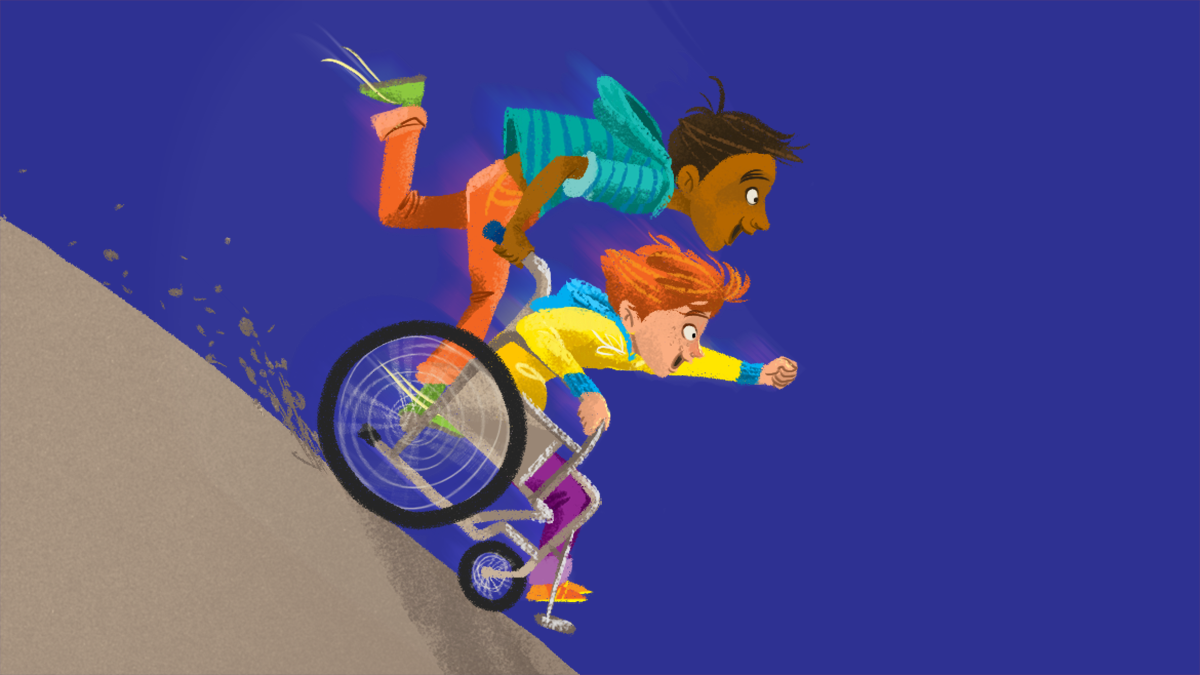Books and disability: advice for writers, illustrators and publishers
Books should fully reflect our diverse society. As many as one in six children have special educational needs, and yet the books we give children do not come even close to acknowledging this. Here's how you can help change things.

Trying to ensure a disabled person is included in a storyline or picture can at first feel contrived, tokenistic or even ‘over-PC’. However, this is generally because we are used to images and texts that do not reflect the true diversity of society. The book world should be involved in working towards a situation where this is the norm.
Here's how to show disability in a positive and natural way - and avoid any author-illustrator pitfalls.
Understanding disability
A good starting point is becoming aware of the "social model of disability". This is a well-established model that recognises that it is not an individual’s condition that disables them, but rather the barriers (physical and social) around that person.
Disabled people can often feel that they are burden to their families or to the community. They can believe that they make things difficult by needing a ramp, a hearing loop or additional support. In fact, it is simply society’s responsibility to provide the right levels of support.
Approaching any project from this angle can help you to avoid the implication that it is the disabled person who is - or has - the "problem".
Five tips for including disabled characters
- Include a disabled character "naturally". By this, we mean without drawing unnecessary attention to the disability. Including a disabled character does not need to mean major changes to your book. Disabled characters don't need to be triumphing in the face of adversity or longing to be "cured". Books need disabled people who are simply part of the natural landscape, too. Why not include a disabled character where little or no reference is made to the impairment? It can often help to start with the character’s personality first – his/her likes, hobbies, ambitions, etc. For many people, being disabled is just a normal and accepted part of their life. Disability doesn’t need to be a key part of the plot – and certainly not a punchline.
- Avoid stereotyping. Don’t fall into the trap of making the disabled character a "sinner or a saint" simply because they are disabled - or "compensating" for the disability with a special power or almost superhuman skill. A disabled character should be just like any other character – an individual with his/her own views, strengths, weaknesses, ambitions and hobbies. Maybe you could even turn one of these stereotypes on its head. Why shouldn’t the most beautiful and popular girl in the class wear glasses or have a speech impediment? How about giving your cartoon superhero a hearing aid?
- Include different forms of disability and across all ages. Many people immediately associate disability with wheelchairs. Think about other ways of including under-represented groups, such as deaf people, blind or partially sighted people, and people with learning difficulties. Remember that everyone is different, too - for instance, there are many different degrees of hearing impairment. Other types of disability you could represent are facial disfiguration, autistic spectrum disorders, speech and language disorders and "invisible impairments" such as dyspraxia, epilepsy, ADHD and mental health issues. Remember that it can also be difficult to find positive images of disabled adults in children’s books – especially young adults. Showing disabled people having successful careers, relationships, getting married and having children of their own is an important thing you can do, both for disabled and non-disabled readers.
- Think about terminology. Language changes all the time, and terms we used even a few years ago may already be seen as unacceptable or inappropriate today. (See terminology section below.)
- Don’t make assumptions about disability. Think about the specific needs of your character and find out, for example, about the sort of equipment s/he might use, and ways that s/he would overcome particular obstacles.

Using the right language and terminology
Changing just a few words can make a considerable difference to people who are disabled (or work in the field of disability), as well as simply promoting good practice and inclusion.
Language and terminology are in a constant state of change. Remember that what may have been considered acceptable four years ago may be considered by some to be unacceptable today. People's views on language and terminology can be very subjective.
At the time of writing, the following terms may be useful and are generally considered preferable to the examples shown in brackets:
- Disabled (as opposed to handicapped)
- Disabled person (instead of a person with a disability)
- Learning disability (as opposed to mental disability)
- Wheelchair user (as opposed to wheelchair-bound or confined to a wheelchair)
- A boy who has Down’s syndrome (as opposed to a Down's syndrome boy)
- A girl who has cerebral palsy (as opposed to a girl suffering from cerebral palsy)
Illustrating and using positive images
If you are planning, commissioning or illustrating a book, always try to look at ways of including a disabled character somewhere in the book. Sometimes this may be impossible (for example, where an image includes only one or two people). However, always try to err on the side of inclusion. Here are some tips:
- In a group scene (particularly a school or street for example), it should be relatively easy to include items such as a hearing aid, splint, glasses, wheelchair or walker. Do your research and make use of web resources such as Scope’s In the Picture guidance, which features plenty of advice.
- Think about the character’s environment. Even if your disabled character does not feature much in the story, you might give reference to him/her by including visual clues or verbal references to items such as grab bars, ramps or specialist equipment.
- Even if you have no disabled characters in your book, look for ways to present an inclusive environment, such as featuring ramps outside public buildings. This shows an awareness and can offer useful material for discussion.
- Be brave! Look at ways to include less "visible" conditions, such as dyslexia (tinted glasses) or deaf characters (using sign language).
Making books accessible
- Consider your audience’s needs, too. Look at ways of ensuring your book can be accessed by as wide a readership as possible. For example:
- Using a legible font can dramatically help some readers (ideally sans serif – so Arial rather than Times New Roman)
- Avoid very ornate and "handwriting" style of typefaces, which can be difficult to read
- Instead of italics or underlining, use bold text to change emphasis
- Use contrasting colours for the text and background
- Avoid placing text over illustrations or complicated backgrounds
Examples of good practice
Natural inclusion of disabled characters in images:
- Many books by Child’s Play, such as their Hands-On Songs series (Humpty Dumpty, etc), include a vast range of casually included disabled characters
- Books like My First Animal Signs (by Anthony Lewis) also include characters with hearing aids
- Usborne’s books by Jo Litchfield regularly include wheelchair-using characters, such as Daisy the Doctor
Positive and/or natural inclusion of disabled characters in stories, where disability is not central to the story:
- Sophie Smiley and Michael Foreman have included a disabled character in their series about a football-loving schoolboy (series includes Bobby, Charlton and the Mountain, published by Andersen Press)
- Saffy and her family have a wheelchair-using friend in Saffy’s Angel by Hilary McKay
Accessibility:
- Barrington Stoke books are on cream or yellow paper instead of white, making it easier on the eye. They have spent a lot time developing a typeface that they are confident is as easy to read as possible.
Have a look around
Bookmark: advice for families, teachers and librarians
Books and disability: advice for families, teachers and librarians on finding books that present positive images and messages of disability.
Resources and activities
Browse through our useful resources: from lesson plans and reading tips, fun activities and tools for teachers.


